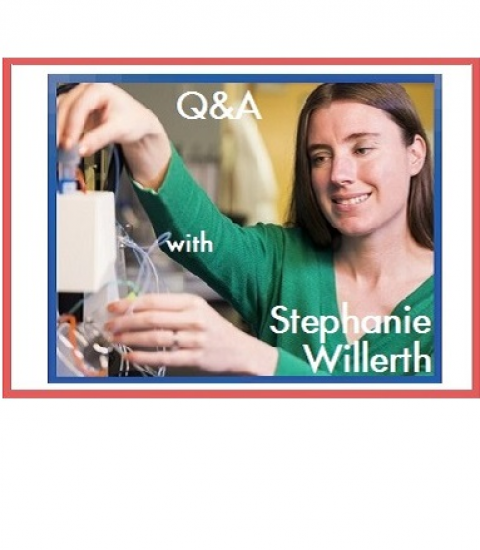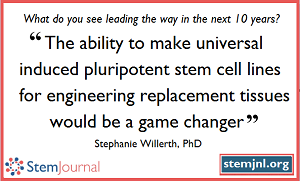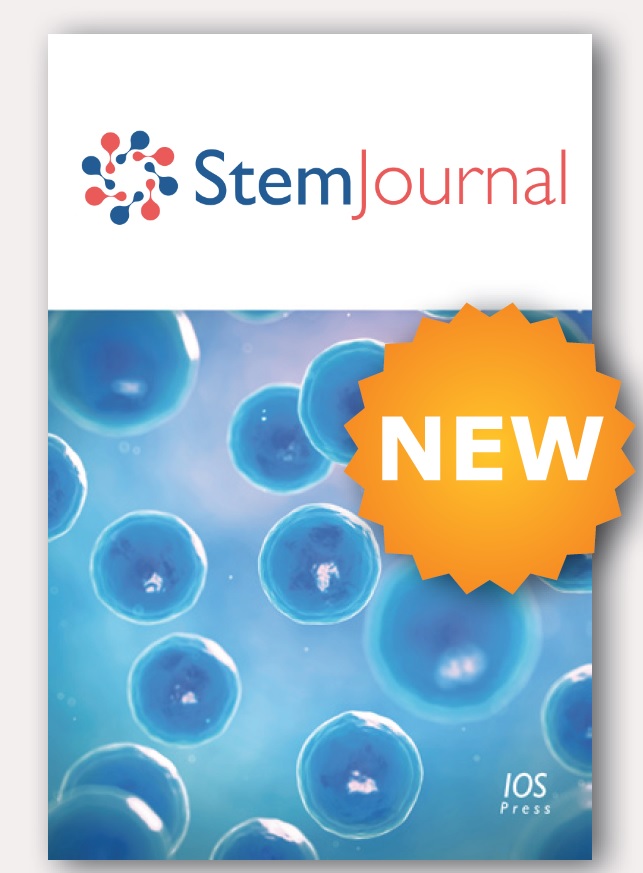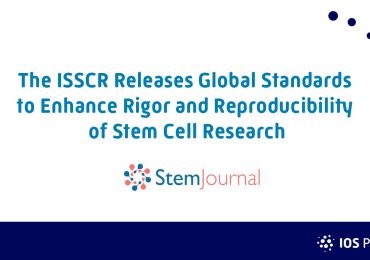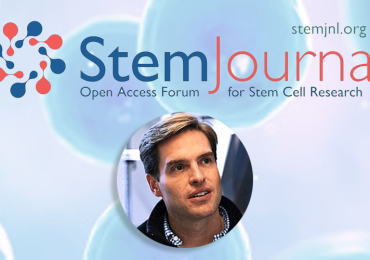Q&A
StemJournal posed some questions to Stephanie and below you can read her answers:
Q: In general, how do you feel the techniques in the field have changed in the last 10 years?
A: The biomaterials have improved along with drug delivery systems for promoting the desired stem cell behavior, along with the methods for confirming tissue function. The field of tissue engineering has also advanced significantly in harnessing the potential of pluripotent stem cells. Another exciting area is the development of novel bio-inks for 3D printing stem cell-derived tissues.
Q: What have the significant advances been, and what do you see leading the way in the next 10 years?
A: The ability to make universal induced pluripotent stem cell lines for engineering replacement tissues would be a game changer as it would make it easier to deliver therapies in rapid manner. Cellular reprogramming also has tremendous promise in terms of cell therapy.
Q: How does the content of the paper(s) relate to your research & has your direction changed over the last decade?
A: My lab has expanded from engineering neural tissue from stem cells to include directly reprogramming somatic cells into neural tissues, recently published in Frontiers (see here). We also recently published a set of papers detailing how we can print functional neural tissues from human induced pluripotent stem cells using the RX1 bioprinter from Aspect Biosystems (see here and here).
Q: What can you share about any exciting project or collaboration in your own research / lab?
A: We are beginning to collaborate with Dr. Nygaard who runs the UBCH Clinic for Alzheimer's Disease and Related Disorders, and we plan to bioprint neural tissue models using patient derived human induced pluripotent stem cells for drug screening applications. I recently wrote an invited commentary on the topic (see here).
Q: Anything else you’d like to share?
A: I was recently featured on the Stem Cell Podcast if you want to learn more about my work (listen to it via this link). I also authored a book entitled "Engineering Neural Tissue from Stem Cells" with Elsevier in 2017 if you want to learn more about my field (see here).
--------
Thank you to Stephanie for answering our questions! The StemJournal article can be viewed here, and it will be co-published on StemBook as the revised chapter soon (the original chapter on StemBook can be viewed here.).
Calling all authors who have previously published chapters on stembook.org. If you feel a revision of your previous article is due, please submit your updated manuscript to StemJournal. See here for full guidelines, or contact us if you have queries via: stemjournal@iospress.com

